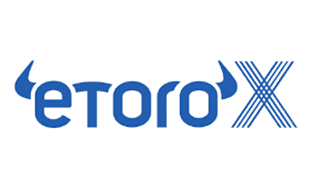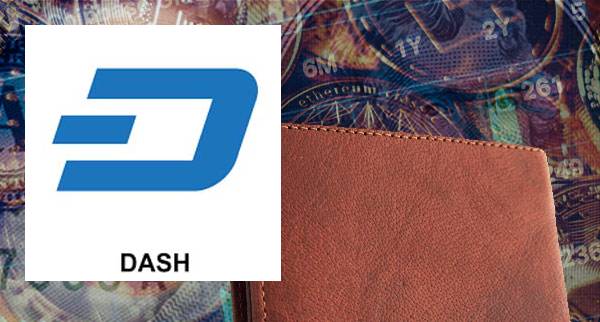A DASH cryptocurrency wallet is a place where you may store your DASH cryptocurrency in a safe and secure manner along with other crypto assets. There are many distinct varieties of DASH cryptocurrency wallets. DASH wallet is a digital wallet that holds DASH. It serves as a primary interface to decentralized finance protocols, such as decentralized exchanges and non-fungible token marketplaces. A DASH wallet can either be a custodial or non-custodial wallet. A DASH custodial wallet is one in which a third party holds the private keys for you. Because these keys are important, you should take precautions to ensure they remain safe. In the event that you lose your wallet, you will not be able to access your cryptos, putting your funds in the hands of a malicious party. If you do not trust the security of a custodial wallet, consider using a hardware wallet. These are devices that look like a USB stick and store the private keys.

🤴 Used By: 23,200,000
⚡ Crypto Available: BTC, ETH, BCH, XRP, DASH, LTC, ETC, ADA, MIOTA, XLM and 27 more cryptocurrency.
📈 Traded Volume: 41,693,321
💵 Deposit Methods: Credit cards, VISA, MasterCard, Diners Club, Maestro, Debit Cards, Bank Transfer, PayPal, Neteller, Skrill, WebMoney, China UnionPay, Giropay, Electronic wallets (eWallets), Ethereum, Bitcoin, Bitcoin Cash, Dash, EOS, Ripple XRP, Litecoin, Zcash, Payoneer,
💰 Trading Fees: Fees vary. Overnight and weekend fees apply
💰 Withdrawal Fees: US$5 (minimum withdrawal of US$50)
💰 Deposit Fees: Fees vary (conversion fees for non-USD deposits)
Trading cryptocurrencies can be high risk. Losses may exceed deposits when trading CFDs.

🤴 Used By: 13,000,000
⚡ Crypto Available: BTC, ETH, BCH, XRP, DASH, LTC, ETC, ADA, MIOTA, XLM and 27 more cryptocurrency.
📈 Traded Volume: 42,043,394
💵 Deposit Methods: Credit cards, VISA, MasterCard, Diners Club, Maestro, Debit Cards, Bank Transfer, PayPal, Neteller, Skrill, WebMoney, China UnionPay, Giropay, Electronic wallets (eWallets), Ethereum, Bitcoin, Bitcoin Cash, Dash, EOS, Ripple XRP, Litecoin, Zcash, Payoneer,
💰 Trading Fees: Fees vary
💰 Withdrawal Fees: Fees vary
💰 Deposit Fees: Fees vary
Trading cryptocurrencies can be high risk. Losses may exceed deposits when trading CFDs.

🤴 Used By: 4,000,000
⚡ Crypto Available: BTC, ETH, ETC, XTZ, CLV, EOS, OMG, BNB, LTC, UNI and 820 more cryptocurrency.
📈 Traded Volume: 5,945,756,067
💵 Deposit Methods: Cryptocurrency
💰 Trading Fees: Maker: 0.20%
💰 Withdrawal Fees: Fees vary
💰 Deposit Fees: None
Trading cryptocurrencies can be high risk. Losses may exceed deposits when trading CFDs.

🤴 Used By: 1,000,000
⚡ Crypto Available: BTC and 1 more cryptocurrency.
📈 Traded Volume: 612,000,000
💵 Deposit Methods: Bank transfer (ACH)
💰 Trading Fees: None
💰 Withdrawal Fees: Fees vary
💰 Deposit Fees: Fees vary
Trading cryptocurrencies can be high risk. Losses may exceed deposits when trading CFDs.

🤴 Used By: 8,000,000
⚡ Crypto Available: BTC, ETH, XRP, BCH, EOS, LTC, ADA, XLM, TRX, NEO and 434 more cryptocurrency.
📈 Traded Volume: 110,957,137
💵 Deposit Methods: Cryptocurrency
💰 Trading Fees: 0.10%
💰 Withdrawal Fees: Fees vary
💰 Deposit Fees: None
Trading cryptocurrencies can be high risk. Losses may exceed deposits when trading CFDs.

🤴 Used By: 10,000,000
⚡ Crypto Available: BTC, BCH, ETH, XRP, LTC, BTG, DASH, ETC, EOS, QTUM and 320 more cryptocurrency.
📈 Traded Volume: 924,266
💵 Deposit Methods: Cryptocurrency
💰 Trading Fees: Maker: 0.2%
💰 Withdrawal Fees: None
💰 Deposit Fees: None
Trading cryptocurrencies can be high risk. Losses may exceed deposits when trading CFDs.

🤴 Used By: 73,000,000
⚡ Crypto Available: ATOM, BAT, BTC, BCH, XRP, DAI, DASH, EOS, ETH, ETC and 73 more cryptocurrency.
📈 Traded Volume: 7,622,846,254
💵 Deposit Methods: Bank transfer (ACH)
💰 Trading Fees: Fees vary
💰 Withdrawal Fees: Instant Card Withdrawal: Up to 2% of the transaction plus a minimum of 0.45
💰 Deposit Fees: Credit/debit card: 3.99%
Trading cryptocurrencies can be high risk. Losses may exceed deposits when trading CFDs.

🤴 Used By: 450,000
⚡ Crypto Available: BTC, ETH, XRP, EOS, LTC, XLM, USDT, OMG, ZRX, MKR and 42 more cryptocurrency.
📈 Traded Volume: 64,141,140
💵 Deposit Methods: Bank transfer
💰 Trading Fees: Maker: 0.05-0.15%
💰 Withdrawal Fees: Fees vary
💰 Deposit Fees: No Fees
Trading cryptocurrencies can be high risk. Losses may exceed deposits when trading CFDs.

🤴 Used By: 10,000,000
⚡ Crypto Available: BTC, ETH, USDT, XRP, ATOM, XTZ, XLM, LINK, CRO, BCH and 153 more cryptocurrency.
📈 Traded Volume: 2,630,000,000
💵 Deposit Methods: Credit card
💰 Trading Fees: Maker: 0.04-0.20%
💰 Withdrawal Fees: Cryptocurrency: Fees vary
💰 Deposit Fees: None
Trading cryptocurrencies can be high risk. Losses may exceed deposits when trading CFDs.

🤴 Used By: 2,300,000
⚡ Crypto Available: BTC, ETH, ETC, BCH, LTC, ADA, QTUM, XRP, XTZ, EOS and 10 more cryptocurrency.
📈 Traded Volume: 86,072,667,390
💵 Deposit Methods: Bank transfer (ACH)
💰 Trading Fees: 2.9-3.9% (depending on loyalty level)
💰 Withdrawal Fees: Fees vary
💰 Deposit Fees: Credit card: 5%
Trading cryptocurrencies can be high risk. Losses may exceed deposits when trading CFDs.

The most common for of DASH wallet is a online hosted DASH wallet. These DASH software wallets are available online using a 3rd DASH trading platform which offers free DASH wallets. Online software DASH wallets are the most common.
For some DASH users who wish to have addtional security with their DASH wallets, physical DASH hardware wallets are available. DASH hardware wallets are usually small usb drives with your secure DASH crypto keys. If you lose your DASH hardware wallet you will lose the DASH stored on it. A DASH personal identification number (PIN) and a passphrase safeguard the DASH private keys that are kept on the DASH hardware wallet. When you plug in your USB DASH hardware wallet into your computer you will be asked for your DASH PIN to proceed.
Yes DASH wallets are free, though there may be fees related to DASH transactions.
When exclusively used for the purpose of keeping DASH cryptocurrency, the usage of a DASH wallet does not result in any costs being charged by the user of the DASH wallet. This is because fees are only assessed when the DASH wallet is utilised for another reason. If, on the other hand, you want to perform a DASH transaction, the operator of the DASH wallet you are using may charge you DASH transaction fees in order to complete the DASH transaction.
Basically, the DASH wallet is a software program which connects to the DASH blockchain and submits transactions to the ledger. It also generates public and private keys to access your funds. These public and private keys are required to access your funds in the real world. This is different from using a credit card or debit card, which do not require a physical exchange of funds. Instead, you will enter a private pin number in order to confirm your ownership of the funds.
A DASH wallet generates a public and private address. It uses a hash function to encrypt the input and output and is essentially like a web address. A private key is the only way to access the funds in a DASH wallet. A DASH wallet can be software or hardware. Wallets can be desktop, mobile, or web-based. Transaction fees can vary, depending on what DASH you are using. The best wallet for you will protect your funds and prevent third-party theft and hacking.
When you decide to use DASH as your payment method, you need to determine how much a wallet will cost. This will depend on several factors, including the number of features you want to include, the technology stack used, the size of the wallet, and its complexity. A web wallet is a good option for storing your DASH. These types of wallets can be used on mobile devices and desktops, but do not offer the same security and control as a hardware wallet. DASHwallet development costs vary greatly. Hardware wallets typically cost $60-$120. Software wallets are generally free to download, but charge a small per-transaction fee. While DASH is the standard, the 500th most popular digital currency may not be supported. Depending on your requirements, you should choose a wallet that offers the convenience and security you need while keeping your budget in mind. If you have a specific idea of what you need, then you can decide on the price.
If you want to cash out your DASH, you need to first sell your DASH to obtain cash. You can then transfer the funds to your bank account or buy more. The amount of cash you can withdraw depends on your withdrawal request. There are many ways to cash out your DASH. One method involves selling it on a DASH exchange. The exchange will then convert the DASH to your local currency.
Besides exchange services, there are also third-party exchange brokers that allow you to cash out your DASH. The best ones also accept debit cards and DASH ATM's. Third-party exchange DASH brokers offer a fixed rate and are easy and safe to use. You should consider the country where you are located before deciding on the best method for you. You will also need to consider how long it takes for you to receive your cash.
DASH are digital currencies, and individual units are called coins or tokens. Some are intended to serve as units of exchange and stores of value, while others are designed to be computer networks. DASH uses a mining process that requires computers to solve complex puzzles in exchange for newly-minted coins. This process verifies the authenticity of transactions, and the computer owner receives the newly-minted DASH. Other DASH have a lighter environmental impact, such as Ether.
The concept of DASH represents a new decentralized paradigm for money. They do away with centralized intermediaries that police and enforce transactions between two parties. This is particularly useful in countries that have high crime rates. As DASH continue to gain acceptance, new laws and regulations may emerge to govern their use. As they become more common, DASH could become the currency of the future. In the meantime, technology may make DASH the currency of the future.
A DASH wallet is like an online bank account, but the only currency it holds is digital money. With a DASH wallet, you have control over your funds at all times, unlike an account at a DASH exchange. When you transfer funds to a non-custodial wallet, you maintain control of the DASH itself, so you will need a password or secret seed phrase to access your money.
While adding funds to your DASH wallet can be intimidating for first-timers, this is an important step for your investment. Never leave your DASH in exchanges, as it is not safe. A wallet's private key is a key that only you have access to, and you must ensure it is stored in a safe location. Once you have done this, you will be ready to spend your DASH.
Transferring money from your DASH wallet to your bank account is not as complicated as you think. There are a few ways to make the transfer, some of which will cost you money and will take a long time, but most of them are fast and hassle-free. You will want to use several middlemen to make the transfer, but it is still possible to save money on fees by using one.
To withdraw money from your DASH wallet, visit the withdrawal screen. The screen will display the option for DASH or fiat, with a description like "Withdraw Fiat to bank account." Choose your desired currency and enter the amount you wish to withdraw. Then click "Withdraw." This will transfer the funds to your bank account, as well as any possible fees. Afterward, you will see the amount withdrawn, who received it, and whether it was successful or not.
DASH ATM will deliver your currency to your DASH wallet after you have identified it. Most of them use a QR code to make it easier for users to identify their wallets. While most DASH ATMs offer a real-time exchange rate, some will also allow withdrawals of other DASH. The fee for each withdrawal or deposit will be the convenience fee from the exchange. The convenience fee is negligible if you use a trusted exchange.
A DASH ATM is an ideal place for a newbie to start trading. While the initial fees can be high, the convenience and speed of these machines will make them an excellent choice for those just starting out in DASH. While there is no doubt that fees are a definite drawback of this new technology, it is worth exploring.
While mobile DASH wallets are convenient for daily use, they have a limited range of features. Some are designed for mobile devices and are more secure than other types. Trust Wallet is a popular example of mobile DASH wallet. Obviously, mobile devices are vulnerable to malware and malicious apps. Always remember to encrypt your mobile wallet with a password and back up your private keys. It is important to know that the type of DASH wallet you're using has been thoroughly tested and proven to be safe.
Hardware DASH wallets are an excellent option for large DASH holdings. They are typically more secure than software wallets, but are more expensive. Some services will even ask for your private key instead of your wallet address. You can also use your DASH wallet to bid on NFTs and invest in tokens, earning interest. If you are using a desktop wallet, however, you will want to be sure to get one with strong encryption capabilities.
While DASH is by far the most popular digital currency, many altcoins are growing in popularity as well. Each of these DASH have their own unique infrastructure and ecosystem. If you plan to use more than one DASH, it may make sense to choose a wallet that supports multiple currencies.
A DASH wallet is similar to an online bank account. It lets you access your funds from anywhere, but you will have to enter your DASH address each time you make a transaction. Moreover, your DASH wallet will be public, and therefore, vulnerable to hacking.
Non-custodial wallets are the best option if you are only looking for a basic solution to handle DASH transactions. Non-custodial wallets are free, but are best for people who need to protect their DASH assets. The only issue with non-custodial wallets is the fact that they require you to store your private key in a secure location. To protect yourself against hackers, you can opt to use hosted DASH wallets.
It used to be very difficult to use a DASH wallet, but these days they are far easier to use. When choosing a DASH wallet, you should consider whether you want a web DASH wallet or a physical device. Web wallets are convenient, but they lack the security of a traditional wallet. Wallets that offer both features are popular, and you should choose one that works best for your needs. You should also choose a wallet that allows you to store your keys offline. Cold DASH wallets are usually more secure than hot wallets, and can be as small as a key.
A hardware DASH wallet is typically a USB stick that can be disconnected from your computer when you're not using it. Another option is a mobile DASH wallet, which can be used as a digital wallet. These wallets can be used to buy and sell digital assets and to transfer them from one wallet to another. Some people may choose to use a desktop wallet at first, but later switch to a more feature-rich DASH wallet.
Among the various DASH wallets available, Exodus is a popular choice for beginners. This hot wallet is online and is compatible with Windows, Mac, and Linux. Its user-friendly UI and built-in DASH exchange make it easy to navigate and use. Beginners can use Exodus for storing and exchanging coins on exchanges. However, some advanced users might be frustrated by its simplicity and lack of features.
Its source code is open and many DASH blockchain developers have contributed to it over the years. While its interface is somewhat dated, it does its job perfectly. However, Electrum might not be easy to use for beginners. Instead, you should choose a DASH wallet that is tailored to your needs. Some of the top DASH wallets are dedicated to advanced users, while others are designed for beginners.
While using an offline DASH wallet is very secure, there is always the risk of it getting lost or stolen. Fortunately, there are several methods for protecting offline wallets. The first is to back up the private key, which is stored securely in an offline DASH wallet. Alternatively, you can use a hardware wallet, which is a small plug-in device that allows you to access your DASH only through direct use.
While the primary purpose of a non-custodial DASH wallet is to store secret keys and sign transactions, it is also vulnerable to supply chain attacks. DASH wallet security controls should focus on user authentication and data storage. These should be based on local authentication, rather than using a one-time password for your wallet application. DASH wallets often miss crucial security controls around passwords and authentication flows, which reduces the bar for attackers and can lead to credential leakage.
The DASH exchanges are also a potential security risk. DASH Exchanges store the private keys that are associated with the accounts of their users. This makes them convenient for users, but it also presents the risk of a hack. DASH Exchanges also do not make the best decisions regarding the protection of their data.
There are also insurance policies available for institutional investors who hold DASH. But until now, there is no such option for individual DASH owners. DASH Shield is the first insurance product specifically designed for individual wallet holders. Although it is aimed at individuals who dabble in the DASH market, it is designed for individuals who wish to protect themselves from the risk of loss or theft of DASH assets. However, it's important to note that although the federal government doesn't insure DASH assets, the insurance industry is still relatively young. As a result, insurance providers consider DASH to be a risky investment and charge astronomical premiums to protect their investors.
The best DASH wallets are not centralized. They have no back end, and you can send or receive DASH to and from anyone. These types of wallets also tend to be the most secure, but you must protect your keys. A hardware wallet is much safer, but you will need to choose a reputable DASH wallet that does not connect to the internet. Wallets with offline storage are safer than online ones, but they are not completely secure. And mobile wallets are hardly safe, either. In any case, you should only use a hardware wallet when you are storing large amounts of money.
Cold storage DASH wallets are not as safe as software wallets, but they are the least vulnerable. A cold storage wallet requires a victim to fall for a phishing attack before hackers can steal their private keys. Cold storage DASH wallets can also be stored in hardware, usually on a USB drive. These DASH wallets require a password to access them, which is another precaution to take. They are more secure than software wallets, but they still have their flaws.
When choosing a DASHwallet, there are several factors that you should consider. While many DASH wallets claim to be the most secure, there are a few things you should look for in order to avoid any possible frustration. Keep reading to find out which features to look for and which options are best for you.
A custodial DASH wallet holds your private key on its servers, while a noncustodial DASH wallet is managed by you. Desktop wallets are downloaded to your computer and are only accessible through that device. This method of storage is relatively secure, but the device needs to be connected to the Internet constantly.
Hardware DASH wallets should be secure enough for you to store multiple DASH. Choosing one that is compatible with multiple DASH is recommended. Software wallets should also be secure enough. Software wallets with good reviews should be protected by encryption. A good wallet should also be easy to use and will allow you to transfer your DASH to and from any other device.
Creating a DASH wallet backup is crucial if you want to avoid losing your funds. Unlike traditional bank accounts, a DASH wallet is decentralized, which means you are the banker of your own funds. Therefore, you are responsible for keeping your private keys safe at all times. It is a nightmare for investors to lose their private keys, and luckily, DASH wallet backups have made this process as simple as possible.
To create a backup, you need to export the private and public keys of your DASH wallet. This is a simple process, but you should make sure you do it in a secure location. It is crucial to encrypt the DASH backup file, which you can easily do with encryption software. Most operating systems include encryption tools, but if they do not, you can download additional encryption software. Once you have encrypted the file, you can store it somewhere else, or delete it from your PC entirely.
DASH wallets are digital wallets that store pairs of DASH keys. These keys are stored on a public ledger called the DASH blockchain, which records all transactions. It is a great way to protect your DASH and store it securely.
First, choose a wallet that supports the type of DASH you want to store. The most basic and easiest-to-use DASH wallet is a hosted wallet. This type of DASH wallet does not support advanced activities such as mining. It also places the responsibility for security on you, as your private key is presented as a random 12-word phrase. In addition, some wallets have additional features that let you directly purchase crypto. You should always choose a wallet that allows you to store your private key in a safe location.
Choose a wallet that supports untraceability. Some DASH centralized exchanges link your wallet with your username and password. This makes it vulnerable to attacks. An attacker will have to steal your private key or fold your wallet in order to access your funds. If you lose your wallet, you will need to use a seed phrase to recover your DASH funds. You can choose a wallet that supports untraceability, which adds even more security.
If you are new to the DASH market, it is best to fund your account with a credit card or bank-issued debit card. You can even sign up with your favorite exchange and fund your account through one of its payment methods. Getting started on your DASH journey can be easy and fun, but you should learn about security measures and your goals before signing up. Listed below are some tips on how to fund your DASH trading account.
When you first start trading, you should fund your account with a small amount of money that you are comfortable losing. Make sure to use a high-liquid DASH exchange with sophisticated tools for trading DASH. Always remember that DASH is volatile, so you should not invest more money than you can afford to lose. Once you have your account funded, you can start trading with real money. If you're new to DASH, you may want to use a demo account first.
A DASH wallet stores encryption keys, digital signatures, and the address of an asset on a blockchain. Without a wallet, the owner of a DASH asset is effectively losing control of that asset and its value. The DASH Blockchain Wallet uses a dynamic fee structure to process transactions. The size of the fee depends on the number of coins involved in the transaction and the conditions of the network. The fees for each transaction are controlled by high-powered computers called miners.
In addition to storing digital assets, a DASH wallet also performs digital signing. When a DASH wallet signs a transaction, it is accepted by the distributed ledger. Most DASH wallet applications store DASH, but some can also hold keys for other types of digital tokens. Some digital tokens are a combination of goods, unique artwork, or even goods in a supply chain.
Two Factor Authentication, or 2FA, is a great way to protect your DASH wallet. Adding an extra layer of security is a smart move, especially if you don't own any DASH yourself. Using an app, such as Google Authenticator, will send a verification code each time you try to log into your DASH wallet. Using two-factor authentication is important to protect your funds and prevent hackers from accessing them.
When a hacker has access to your account through a compromised password, they can access your DASH wallet without ever knowing your password. With two-factor authentication, you will never have to worry about this happening to your DASH. In addition, two-factor authentication is available on many DASH exchanges and wallets. Two-factor authentication works by requiring users to enter their login credentials on a website and then approve a push notification sent to their smartphones.
One of the most important things to remember when using a DASH blockchain wallet is the security. You want to make sure you're protected against attacks by encrypting all transactions with strong passwords. While there are some options that do not require a secure connection, you will want to be safe from any scams. Most DASH wallets require two-factor authentication, and many offer two-factor authentication. A good way to make sure you are protected is to start small and move on to a larger account.
Some DASH exchanges also provide a web-based wallet. But the exchange's private key is not stored on the exchange itself. The private key, or public key, is stored in the wallet itself, and it is only known to you. A DASH exchange's private key is like the key to your bank account, and you need to keep it safe.
If DASH isn’t quite what you are looking for you can check out some of the best DASH crypto wallet platforms alternatives below.
If you would like to see DASH compared agains some of the best DASH crypto wallets alternatives available right now you can do so by clicking on the links below.